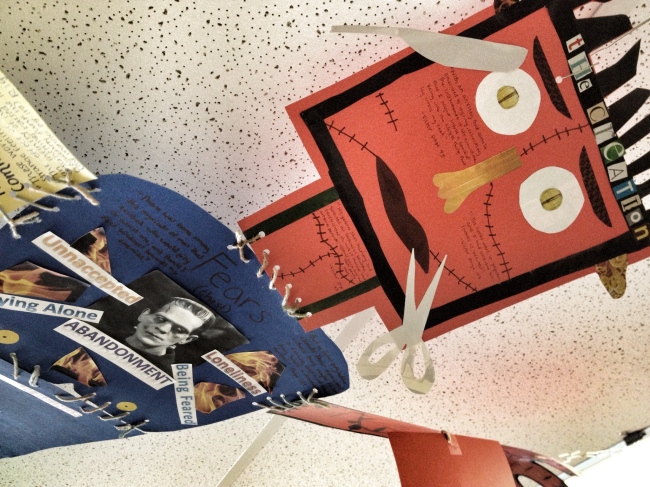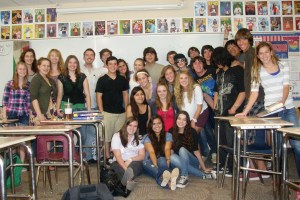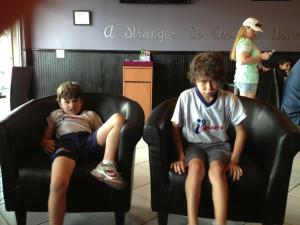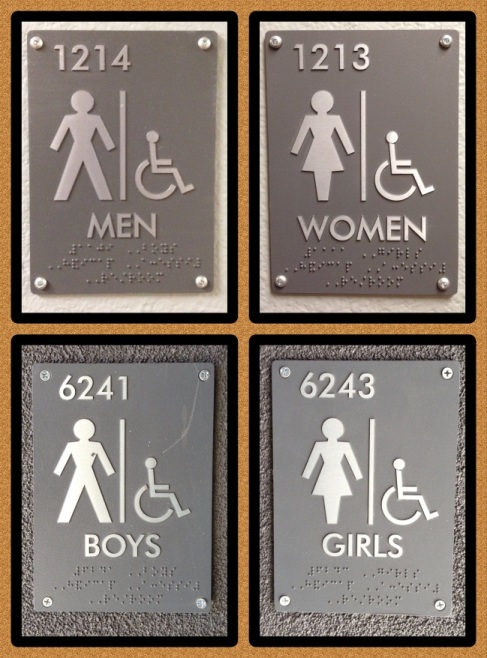 Contributing to our evolution toward equality (educational or otherwise) is a worthy goal for a school. Granted, systemic inequity seems to stack the deck against what even a well-intentioned school can accomplish when it comes to achieving equity. However, schools are a place where the audacity of hope, to borrow a phrase, has a right to exist, and schools are uniquely positioned to help make the world better than many outside of our schools seem to believe it can be.
Contributing to our evolution toward equality (educational or otherwise) is a worthy goal for a school. Granted, systemic inequity seems to stack the deck against what even a well-intentioned school can accomplish when it comes to achieving equity. However, schools are a place where the audacity of hope, to borrow a phrase, has a right to exist, and schools are uniquely positioned to help make the world better than many outside of our schools seem to believe it can be.
Achieving educational equity requires schools that are not just aware of the differences among students, but that also celebrate them, and that leverage those differences–sensitively–for educational advantage. Schools like this are practicing what is now termed cultural competence. A school that promotes cultural competence enables differences to serve not as problems but as strengths of the communities in which we live and teach and learn.
Walt Whitman, in “I hear America Singing,” wrote about “the varied carols” he heard, and he concluded that one of our greatest strengths as a people is “Each singing what belongs to him or her and to none else.” The idea of cultural competence is to bring Whitman’s perspective into the classroom, strengthening every learner there. So what is necessary to make this kind of perspective possible in a particular school? At least three things are essential: faculty who value diversity, a curriculum that enables diverse students to flourish, and students who believe that equity for all is not just possible but is important.
To some extent, culturally competent schools result from the perspective and temperament of the faculty of those schools. As educators, we shape the experience of education for our students, and our experiences, in turn, have shaped us–especially with regards to our attitudes toward difference. I make no bones about the fact that a very painful awareness of my own differences shaped my perspective of the world. As an exceedingly awkward teenager, I developed, partly out of a desire to find ways to blend in, a keen sense of awareness of the differences between others and myself. I am grateful that I benefited from the support of educators who also noted the differences that I did and who encouraged me in various ways to take pride in my own uniqueness, and they inspired me to do the same for others like me. Those educators made my school, and as a result my world, a more welcoming place for me. Experiences exactly like this aren’t required for an educator to be attuned to difference, but however an educator arrives at a perspective that values difference, equity in schools (and, I think, beyond) cannot be achieved without educators strongly committed to supporting and celebrating diversity.
Cultural competence cannot be achieved if the idea of equity is an “appendix”—something bolted on to what we really do in schools. If we value the idea of supporting and celebrating our differences, equity must be built in to what we do, woven throughout the curriculum we teach. Acknowledging the different voices in the room as a normal part of what goes on in the classroom is something that teachers can work to effect in daily interactions in the classroom—both interactions between student and teacher and interactions between students. Even the best-intentioned educators can benefit from training that helps them develop practices designed to celebrate difference. For example, I’ve sought out training from the TRIBES Learning Community organization. TRIBES training emphasizes the creation of classrooms where students feel included, respected and heard–and where, as a result, students are more likely to have positive expectations for themselves and for each other. Based in part on practices developed during this training, and as a way to remind students of the different steps of the writing process, I begin each school year by collaborating with my students to write a classroom Constitution. Inevitably, our brainstorming and idea-organizing leads to a similar set of agreements each year: the right to be heard, the right to be respected, the right not to be made fun of, and the right to participate. This last right is in many ways the most important of the four. If students truly understand that everyone in a classroom has the right to engage in the learning that occurs in that classroom, they are more likely to remain aware of the ways their actions support, or infringe on, everyone’s engagement in the learning process. The written document that my students create with me hangs on the wall in our classroom, and students proudly point to it (literally) from time to time to encourage each other to be supportive when sometimes we get off track. Likewise, with very little effort it’s possible to find opportunities in my curriculum (which happens to be World Literature), to incorporate texts that celebrate difference–texts like Anaya’s Bless Me, Ultima, Shakespeare’s Othello, Shelley’s Frankenstein, and Things Fall Apart, by Achebe. I have chosen these texts in part because they give me and my students direct opportunities to explore our responsibility to grapple with the process of welcoming new kinds of beings into our conception of what it means to be “human.”
I take seriously my obligation to be sensitive to the strengths that come from our differences. But it is my students who most need to learn this sensitivity if equality is to become possible. A variety of studies reported on recently, including a study done by Joshua Aronson and Claude Steele and written about in The New York Times by Anne Murphy Paul, suggest that students perform less well in the classroom when reminded of their racial or gender differences. Aronson and Steele call this “the stereotype effect,” and it seems symptomatic of the ways that systemic inequity promulgates itself. In all sorts of ways, both subtle and obvious, our students buy into the idea that our differences are problematic, and their engagement in their own education suffers—especially among those students who have the most to lose from inequity. One of our most important tasks as educators interested in equity (educational or otherwise) is to help our students believe in what might be possible if equality were a reality. I know that I am helping my students believe in this when I see them embrace difference and advocate for the ways it strengthens us.
One day in my classroom something happened that helped me see how an approach embedded in the idea of cultural competence helps my students grow as learners and as people. Each year, after we finish reading Frankenstein, my students take part in a collaborative and artistic recreation of Shelley’s Monster. Different groups of students create different poster-board body parts, using quotations and pictures to depict various aspects of the Monster’s life. As the project ends, we stitch together these body parts, discussing the Monster’s life as we do so. One year, the class accidentally created a Monster with two left feet. Immediately, students started offering solutions. Cut the feet off, and switch them around. Switch the legs. Start again, and recreate one of the feet. But then one of the students piped up from the back of the room, “Wait a minute! Our Monster has two left feet. That’s the way he is. All of the problems in the book were the result of Victor not accepting the Monster the way he was. We should leave him just like he is. He’s fine!” And that’s what we did. It wasn’t exactly as poetic as Langston Hughes’ “I, Too, Sing America,” but this student’s realization was progress, and I’m glad to have had a hand in creating the kind of classroom that fosters among my students a belief in what cultural competence might allow us to achieve.







